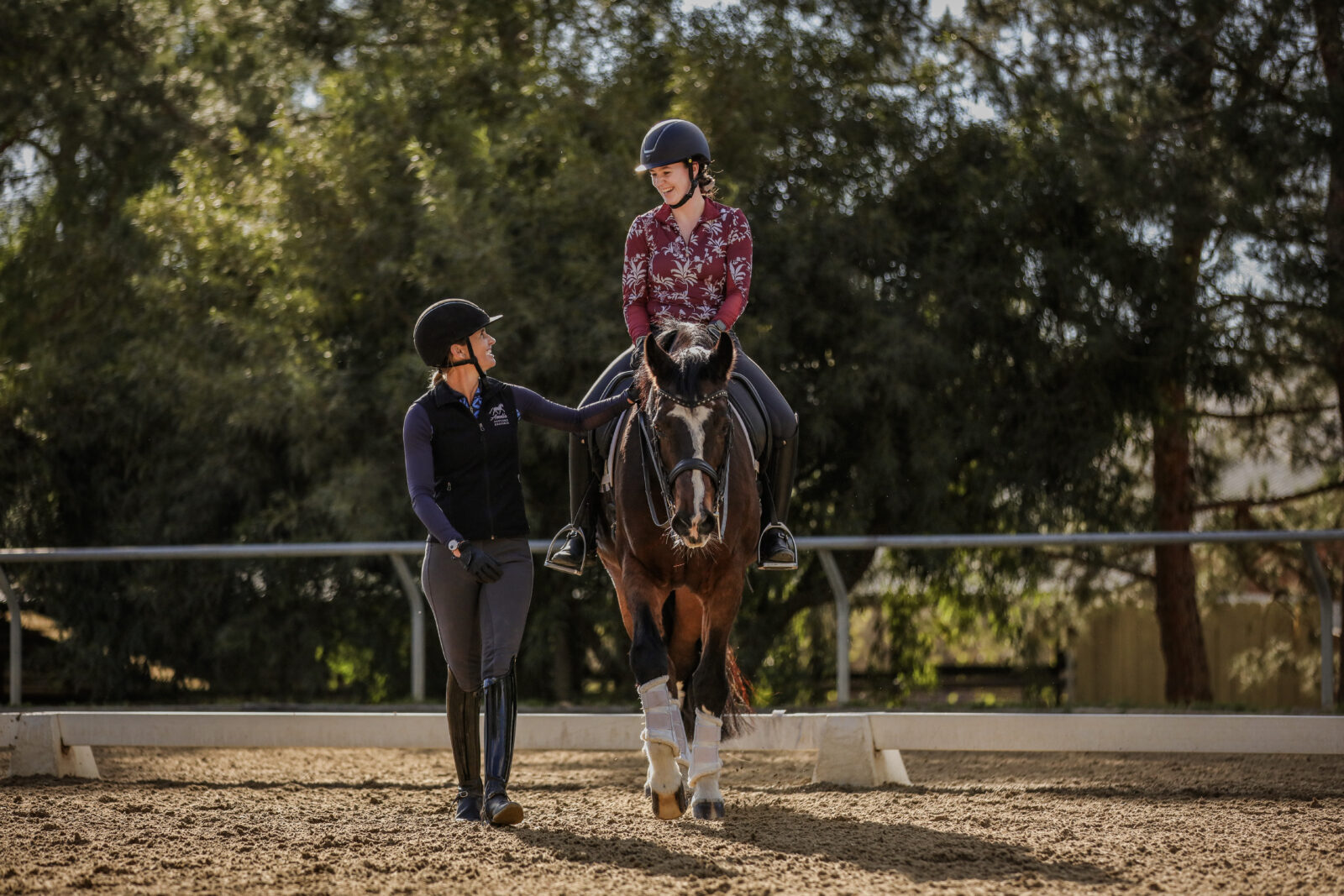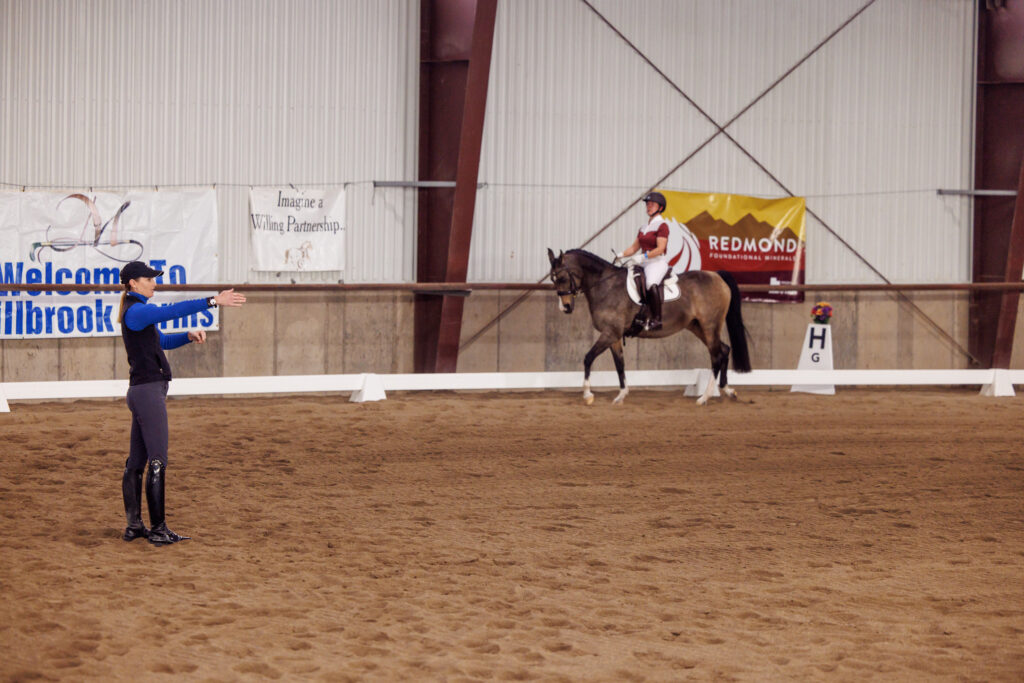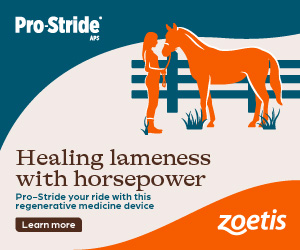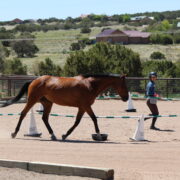Why Is It Wrong For My Horse To Be ‘Behind The Vertical?’

Ever had a riding theory question you couldn’t find the answer to? Or don’t have a go-to coach to ask? In this recurring segment, Amelia Newcomb is here to answer anything about your riding and dressage needs.
Why is it bad to be ‘behind the vertical’ and how do you fix that in a horse who easily slips into that kind of position?
To understand why ‘Behind the Vertical’ or ‘curling’ isn’t desirable, we have to first learn what the vertical is and how we identify both correct and incorrect neck carriages.
First, thinking about it just as the neck is simplifying the system and doesn’t highlight what is actually important. Being ‘on the vertical’, and ‘on the bit’ are synonymous to when a horse is round over their back with a consistent connection to a frame where the horse’s head is straight up and down with 90 degree to the ground (Note: sometimes we have connection on a stretch frame with the horse’s head in front of the vertical. This is also correct.).
When a horse is round or ‘on the bit’ they are lifting through their back and lifting their shoulders, carrying themselves in better balance and posture. It is the lifting of the back and shoulders that causing the neck to raise in that arch and for the head to hang in the correct position. The head and neck is a symptom of everything else that is happening in the body. When a horse is round and on the bit, it allows them to move more effectively and with more symmetry, meaning over time they are sounder and have greater longevity.
‘Behind the Vertical’ is either when the reins are used to try to force the head down into that arch headset, or when the horse is trying to not use their core muscles to lift their back, and they are avoiding the work. It is typically noticed when the nose is behind that 90 degree line. What also happens is that the back drops or hollows, the shoulders are down, and the hind legs aren’t engaged or even out behind the hips.
When your horse isn’t round they aren’t going in correct posture and not using their body correctly, which is the major problem.
- it puts extra wear and tear on your horse,
- it’s not as comfortable for them to carry you,
- they will find it harder to balance,
- it’s harder to steer and stop,
- and it’s not as fun or safe for you.
It’s not necessarily always rider caused (it could be the training history of the horse, the horse’s own innate weaknesses in their body, etc.), but it is certainly the responsibly of the rider to help their horse by teaching them how to carry their body round and more effectively for the long-term longevity and health of the horse. It won’t happen overnight, so give yourself grace and work on it bit by bit.
I teach whole courses on how to teach your horse how to go round and correctly on the bit, but here are some quick tips to help you for a horse that curls.

Start from the ground
When you do in hand work, you can physically see when your horse is lifting their back and moving correctly into the contact. It helps your timing, and allows your horse to improve their posture without carrying you.
Check your rider position
If we are out of alignment, it makes it nearly impossible for our horse to carry themselves properly. Do inventory checks to make sure that you’re not leaning forward or collapsing.
Leg-yield and Shoulder-In
To help your horse lift their back, shoulder in is the best because it creates the bend in your horse that is needed to tip their pelvis and lift their back. If your horse can’t do shoulder-in yet, start with leg yields. As you feel your horse curl or tuck behind the vertical, ask your horse to step into a baby leg yield to show them how to better position their body.
Come to one of my free webinars!
I am hosting a webinar all about contact and connection in early September. In it you’ll learn everything you need to know about correctly teaching your horse to go round and on the bit. Plus, it’s FREE to attend. Get the details here!
Amelia Newcomb is a USDF Gold medalist. Based in Somis, California, she incorporates complete dressage training from starting the young horse through the FEI levels in both her in person and online programs. Amelia works to develop a trusting and confident relationship between horse and rider. Her approach incorporates all aspects of horsemanship from basic groundwork to advanced dressage movements. Amelia’s mantra has always been “Dressage for All”, which is evident in both her in person and online coaching. With a successful YouTube video library of hundreds of free educational videos, over 220,000 subscribers (and counting!), and thousands of students enrolled in her online USDF accredited courses.


